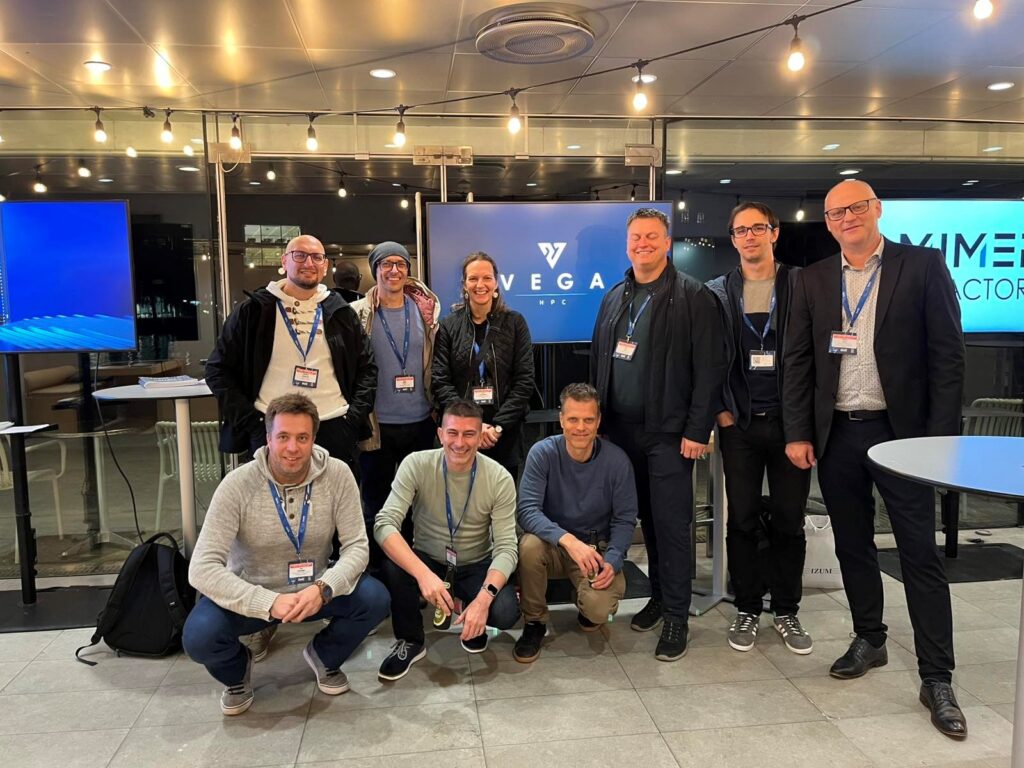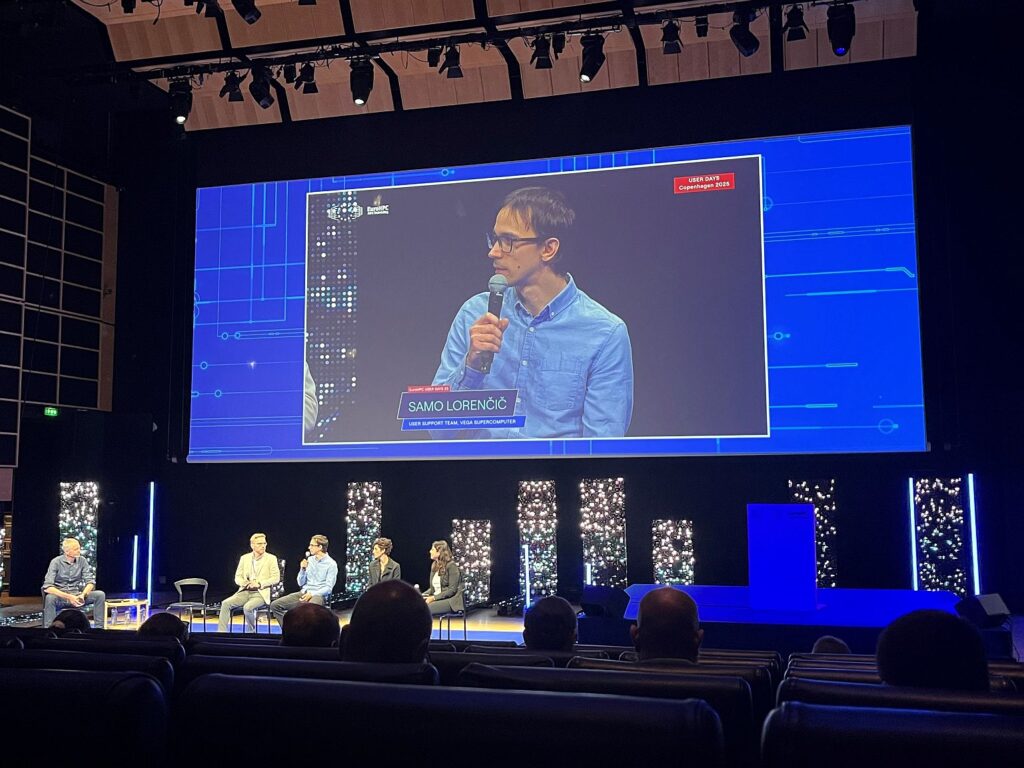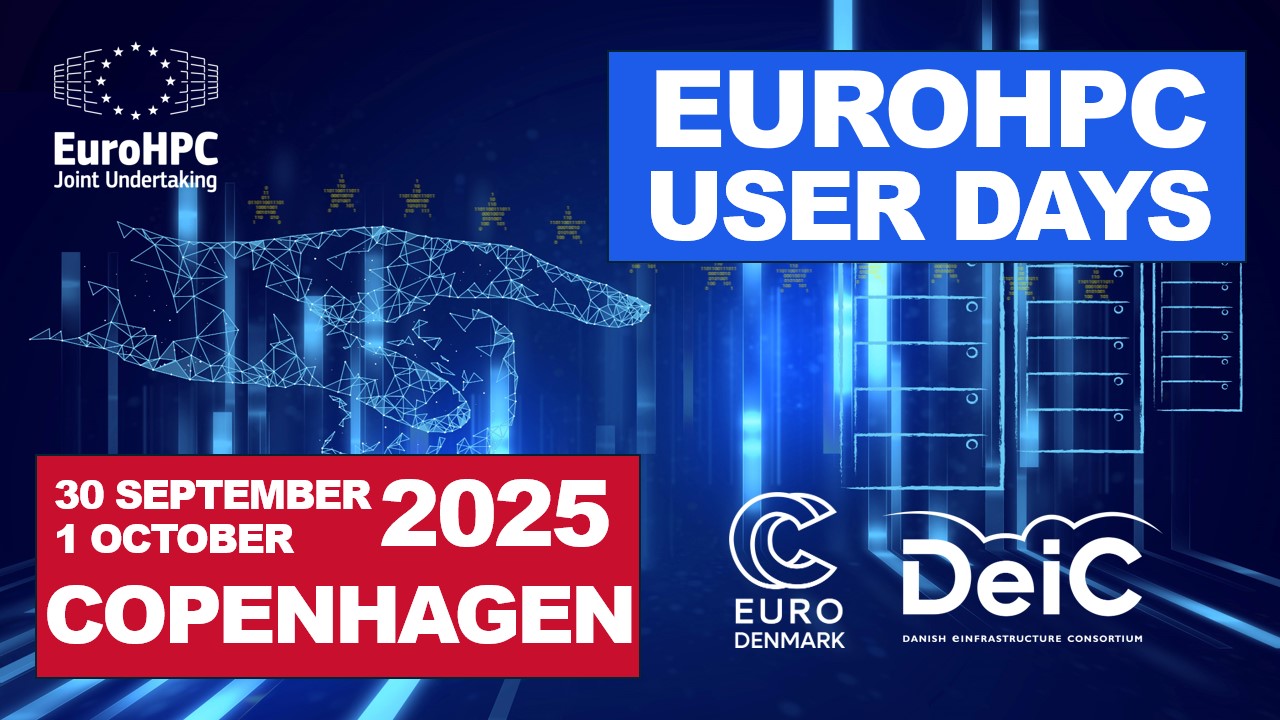The third edition of the EuroHPC User Day 2025 took place in Copenhagen from 30 September to 1 October, organized by the EuroHPC Joint Undertaking in cooperation with EuroCC Denmark and the Danish e-Infrastructure Consortium. The event brought together more than 380 participants from across Europe – both onsite and online – and provided a platform for sharing experiences, presenting projects, and discussing the use of European supercomputers.
Participants had the opportunity to showcase their projects using European high-performance computing (HPC) resources, exchange best practices, gather feedback from other users, and connect with potential new EuroHPC users. The event thus played an important role in deepening understanding of the opportunities offered by the EuroHPC infrastructure and strengthening collaboration across the European research community.
Colleagues from the Institute of Information Science (IZUM) presented the HPC Vega supercomputer and the Slovenian Artificial Intelligence Factory (SLAIF)—which began operating on September 1—in a special area dedicated to promoting EuroHPC supercomputers and AI factories. The presentation highlighted Vega’s capabilities as one of the key European supercomputers within the EuroHPC framework and showcased the role of the SLAIF project in advancing artificial intelligence and data technologies.
As part of the second day of the EuroHPC User Days event, a panel discussion was held on user experiences and support for high-performance computing (HPC) users. The discussion, moderated by Dr. Thomas Geenen from the user community, brought together representatives of various European projects, support teams, and a user representative, Dr. Valeria Ospina-Bohorquez.
Samo Lorenčič from IZUM took part in the discussion as the representative of the user support team for the Vega supercomputer within the SLING network. He highlighted the most common challenges users face when working on Vega, mentioning the need for more training to effectively use the available tools and the difficulties related to code optimization for Vega’s architecture. He also emphasized the importance of improving communication between users and the support team, which leads to more efficient collaboration and allows researchers to focus on scientific rather than technical challenges.
The panelists also looked ahead to the future, agreeing that enhancing the user experience will be one of the key priorities. More attention will be given to training, the development of simpler support tools, and closer collaboration among European HPC centers, service providers, and users.
The event concluded with an awards ceremony. For the second consecutive year, a user of the HPC Vega system received the Best EuroHPC User award, following a nomination by IZUM. This year’s award went to Dr. Valeria Ospina-Bohorquez from Focused Energy GmbH (Germany), a company engaged in advanced research on fusion energy — specifically on proton fast ignition. This approach seeks to replicate on Earth the same processes that power the Sun and other stars. By producing high-energy proton beams to ignite small fuel targets, her work contributes to the development of clean and virtually limitless energy.
